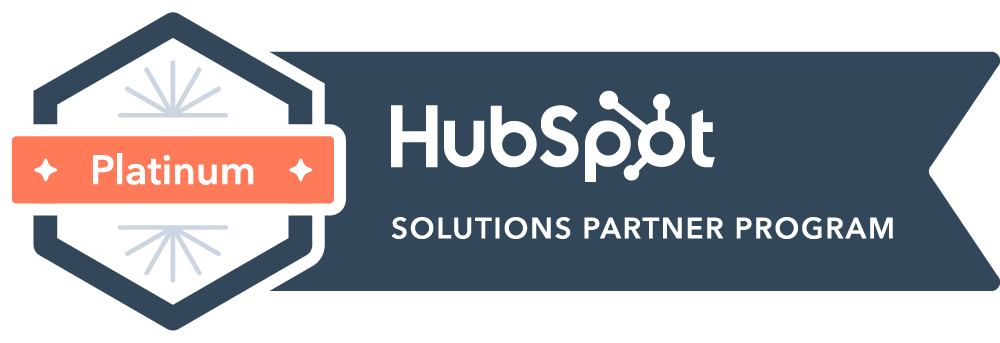Crafting International SDR Engines for Rapid Expansion

Table of Contents Global revenue isn’t a bonus, it’s becoming the norm. For high-growth companies, expanding internationally is no longer a bold move. It’s a standard step in building something that lasts. The opportunity is real. So is the complexity. New markets bring language barriers, regulatory headaches, and wildly different buyer behavior. But the payoff is significant if you can build a high-performing international SDR engine. You get rapid growth, wider brand reach, and a more resilient revenue model. We’re laying out a blueprint for building those engines the right way – not by copying what works at home but by designing intentionally for scale, nuance, and speed. You’ll learn what separates global sales acceleration from slow international sprawl and how to build a system that delivers. The Imperative of Global Sales Acceleration International expansion isn’t optional for most high-growth companies. Investors expect it. Boards ask for it. Founders are judged by how quickly they can show traction in new regions. Markets that were once considered “future bets” are now front and center. Getting this right means more than opening a regional office or hiring a few reps overseas. It means building a sales development function designed for global momentum. Done well, this approach delivers: Increased market share across regions Diversified revenue streams that reduce risk Speed to pipeline in places where your competitors are still figuring out local fit On the other hand, relying on a domestic-only growth strategy limits upside and concentrates your exposure. You end up missing out on a demand you didn’t know existed or losing to players who understood how to localize faster. That’s where international SDR engines come in. They are built to create a consistent, qualified pipeline across markets. Messaging, motion, and management are tailored for each region. Without that structure, you’re flying blind or guessing at scale. Building the Engine: Key Components of International SDR Success Designing a high-performing global SDR engine is not about throwing bodies at new markets. It requires systems, structure, and strategy to make expansion sustainable and scalable. Here’s what matters most. Strategic Market Selection and Prioritization Not all international markets are created equal. Some might have a clear use case for your product, but long sales cycles. Others may have fewer regulatory hurdles but more entrenched local players. You need a framework to assess and prioritize opportunities. This starts with international market research. Look at GDP, digital infrastructure, buyer sophistication, and go-to-market readiness. But the decision isn’t just data-driven. Your internal readiness matters too. Do you have local references? A champion in-region? Compliance sorted? The smartest companies approach this with structured global market analysis and clear tiers. Tier 1 markets are where they can move now. Tier 2 markets need prep work. Others may be long-term bets for future investment. Crafting Localized and Culturally Relevant Outreach Strategies It doesn’t matter how strong your pitch is if it doesn’t resonate. Outreach that works in the US or UK might fall flat in Japan or Germany. That’s why localized messaging and content are non-negotiable. This goes beyond translation. It’s about understanding buying signals, social norms, and decision-making structures. In some markets, phone calls are intrusive. In others, they’re expected. Your SDR team needs to understand these nuances. Language-specific SDRs reduce friction and build rapport faster. They also help avoid costly missteps. Localization applies to channels, too. WhatsApp might outperform email in one region, while LinkedIn carries more weight elsewhere. Great global outreach is built from the ground up. It is not copied and pasted from your home market. Establishing Efficient Remote SDR Teams Across Time Zones Covering multiple markets means operating across multiple time zones. That can create a management headache if you’re not structured for it. But done well, it gives you near 24-hour sales coverage and a global motion that doesn’t sleep. Start by designing the right international team structure. Where are your reps based? Who manages them? How do you create overlap without adding unnecessary layers? Technology helps. Global collaboration tools like Slack, Notion, and Zoom keep distributed teams moving. But it’s also about process. You need clear handoffs, standardized onboarding, and shared expectations. Otherwise, you get inefficiencies, missed opportunities, and siloed execution. Effective remote team management is one of the biggest differences between companies that scale globally and those that stall after a few markets. Implementing Robust SDR Enablement for Global Markets Your SDRs are only as strong as the tools and training they’re given. This matters even more across international markets, where the stakes and variables are higher. Global sales enablement starts with tailored onboarding. Reps need to understand not just the product, but also the specific objections, buyer roles, and workflows in their assigned region. One-size-fits-all decks won’t cut it. Localized sales tools, like region-specific battlecards and objection-handling guides, turn good reps into high performers. Ongoing international sales training keeps them sharp and aligned. At Whistle, we’ve seen how customized enablement can accelerate time to ramp and increase conversion rates across regions. When reps are confident and equipped, your global SDR engine moves faster and smarter. Leveraging Data and Analytics for Continuous Optimization Your international SDR strategy shouldn’t be based on guesswork. You need data that goes deeper than basic activity metrics. International sales analytics give you visibility into which markets are producing qualified pipeline, where deals stall, and which SDRs are consistently delivering. But it’s not just about tracking KPIs. You need to know which metrics matter most in each market. A connect rate of 12 percent in Brazil might be excellent. That same number in Sweden could point to a problem. Local context matters. So does consistent tracking. Build dashboards that compare performance across markets in a meaningful way. Use those insights to optimize outreach, adjust resourcing, and focus on what works. Integrating Technology for Scalable Outreach International growth fails when your systems aren’t built for scale. Your CRM needs to handle multi-region teams, different currencies, and regional data visibility. Without that,
How to Customize CRM Records for Enhanced Sales Visibility

Table of Contents Sales leaders often believe their CRM is doing its job. Then a forecast misses the mark. A deal drops off unexpectedly. A pipeline review leads to more questions than answers. When that happens, the issue usually isn’t the team or the process. It’s the data. Or more specifically, the gaps in visibility that most default CRM setups fail to catch. A CRM should clarify what’s happening across your funnel. But if it only captures surface-level details, it ends up giving you a false sense of control. The truth is that most CRMs, right out of the box, are designed for broad usability, not strategic insight. That’s why smart teams customize. Read on as we show you how to turn your CRM into a high-functioning, insight-generating system. We’ll explore specific examples of customization, explain why it matters, and show you how to structure your CRM to support the way your team sells. The Limits of a Default CRM Setup CRMs are built for flexibility. That doesn’t mean the default setup works. Too often, sales teams rely on generic fields, static stages, and rigid views that don’t reflect their real process. Over time, the CRM becomes a source of frustration rather than clarity. The Wrong Fields Slow You Down Out-of-the-box CRMs usually include broad fields like “deal size” or “industry.” But they often miss critical nuance. Are you tracking product line, buyer role, internal champion, or renewal opportunity? If those details live in rep notes or Slack messages, you lose the ability to measure what matters. When reps don’t see a reason to use the CRM, they stop updating it. Inconsistent inputs lead to inconsistent reporting. And when your data is weak, your decisions are worse. Your Workflows Don’t Match Your Sales Motion Default workflows are designed to be generic. Most teams aren’t. If your deal stages are too rigid or your approval steps are missing, reps are forced to work around the system. That leads to shadow processes and lost information. Good workflows reduce friction. Poor ones create more of it. A CRM should support your sales motion, not dictate it. Dashboards That Look Good but Tell You Nothing When dashboards are tied to the wrong fields, they tell the wrong story. Maybe you can see total pipeline value, but you can’t filter by deal type or persona. Maybe you can track average deal length, but you can’t break it down by region or rep. Reporting should give you clarity. If your dashboards feel disconnected from what’s happening in the funnel, the problem is usually upstream. Activity Tracking Is Surface-Level You can see if a call happened, but not if a proposal was sent. You know when a contact was added, but not if procurement is looped in. Critical signals go untracked because the system wasn’t set up to capture them. That makes it harder to know what’s working. You’re left guessing instead of learning. How to Customize CRM Records for Better Visibility Customizing your CRM is about more than just adding fields. It’s about aligning your system with how your team thinks, sells, and scales. Add Fields That Reflect the Way You Sell Start with the essentials. If you regularly discuss things like buying committee roles, budget status, or product fit, those details should live in structured fields. Audit your current records. What context is missing? What do reps manually track outside the CRM? Use that information to create new fields that bring those insights into view. Keep it tight. Every new field should have a reason to exist. And every required field should feel necessary, not performative. Reorganize Record Layouts Around Efficiency Field placement matters. If reps have to scroll, guess, or dig for key inputs, they won’t use the system correctly. Group fields logically. Keep must-have details above the fold. Eliminate clutter. Record layouts should reflect the flow of a deal conversation. If it feels intuitive, reps will adopt it without extra training. Build Views That Match Team Needs Create saved views that reflect how different roles work. SDRs need visibility into new leads and untouched accounts. AEs need to focus on the active pipeline. Managers need to filter for stuck deals or low activity. Give users the ability to sort, filter, and segment based on real context. The result is faster prioritization and fewer mistakes. Automate the Right Triggers Custom fields give you more data. Automations help you act on it. Trigger alerts, tasks, or workflows based on deal stage, deal value, or specific inputs like “legal involvement” or “pilot confirmed.” Automation should remove busywork and not add noise. Keep it tied to real behaviors and high-impact milestones. Build Dashboards That Reflect Your Strategy Once your CRM is capturing the right data, build dashboards that help you run the team. Don’t just show totals. Show conversion rates by stage, deal quality by persona, or sales cycle by product line. Tailor dashboards by role. Reps need to see their funnel clearly. Managers need performance insights. Leaders need to spot trends before they become problems. Why This Matters CRM customization isn’t just a technical project. It’s a multiplier. When the system reflects your strategy, everything gets sharper. Data becomes a real asset, not a liability. Teams move faster. Leadership gains clarity. And performance improves across the board. Cleaner Data, Fewer Gaps Structured fields lead to better inputs. Better inputs lead to better reporting. You remove ambiguity and reduce reliance on scattered notes or Slack messages. Instead of incomplete records or one-off updates, you get consistent, searchable context across every deal. That improves team-wide alignment and reduces the risk of missed handoffs or misinformed decisions. When data is clean, you can trust what you’re seeing. Faster Sales Execution When reps don’t have to waste time searching for the right field or rewriting the same notes in three different places, they get back to what they’re paid to do. A customized CRM supports their workflow instead of interrupting it. Tasks become simpler. Next steps
Mastering the Art of Engagement in Sales

Table of Contents Some sales conversations stay with you. Not because of what was sold, but because of how it felt — like someone genuinely understood what mattered. And then there are the others. Robotic. One-sided. Forgettable. The difference? Engagement. Engagement in sales isn’t just a soft skill or a nice-to-have. It’s the difference between building trust and losing interest before the first follow-up. Below, we explore what it takes to connect with prospects and customers in a way that’s thoughtful, personal, and effective. It’s not about performing. It’s about understanding how to hold someone’s attention, ask the right questions, and say the things that move a conversation forward. And yes, it’s an art — but one you can learn. Why Poor Engagement Kills Sales Sales teams spend weeks crafting messaging, training reps, and refining outreach strategies. But all of that falls apart if the person on the other side doesn’t feel heard or understood. Poor engagement has a cost, and it shows up fast. Reduced trust and credibility Disengaged prospects don’t believe you understand their needs. And when trust slips, so does the likelihood of any real conversation. Engagement in sales builds credibility through intent, curiosity, and follow-through. Lower conversion rates Every missed cue or rushed pitch chips away at the chance to move a deal forward. Prospects who feel unheard are far more likely to ghost. When engagement is missing, conversion rates drop. Longer sales cycles Disjointed communication adds friction. Questions get repeated. Stakeholders get confused. And what could have been a short sales process drags on for weeks. Engagement brings clarity and momentum. Increased churn and customer dissatisfaction Engagement isn’t just for the pre-sale. Customers remember how they were treated, and how much you stayed in touch. A lack of engagement after the contract leads to churn, missed upsells, and fewer referrals. The real loss is opportunity. Sales teams that fail to engage well don’t just lose deals. They lose context, insight, and reputation. Key Elements of Effective Engagement in Sales Engagement isn’t about charisma. It’s a skill set. One that blends preparation with people skills, and curiosity with relevance. Understanding your audience Every conversation should start with a clear sense of who you’re talking to and why they might care. That means going beyond basic demographics. Sales reps who know their ideal customer profile — and take time to research each prospect — are better equipped to speak to what matters. Engagement in sales starts with relevance. If your first message could be sent to twenty other people, it’s probably not ready yet. Active listening and empathy Prospects can tell when they’re being talked at instead of talked with. They can also tell when a rep is more interested in their own script than in the answers being given. Good sales communication depends on active listening. That means tuning in to tone and body language. It means asking better questions and acknowledging what’s said before moving on to your next point. Empathy isn’t a soft skill — it’s a signal that you’re paying attention. Personalization and relevance Nothing kills engagement faster than a pitch that feels like it was copy-pasted from a template. Personalization is about more than adding a first name to an email. It’s about speaking to real needs, using specific details, and showing that you’ve done your homework. Value comes from context. A message that’s relevant to one customer might be meaningless to another. Engagement in sales depends on knowing which is which. Storytelling and connection People don’t remember data points. They remember stories. Good storytelling isn’t about theatrics. It’s about showing real examples of how a problem got solved, or how a team succeeded — with just enough detail to make it feel tangible. And it’s not just about the company. The most effective sellers build connection through shared experiences and natural conversation. Rapport can’t be forced, but it can be earned. Clear and concise communication You don’t win points for speaking in jargon or making your pitch sound complex. Good sales engagement relies on clarity. Say what you mean. Know when to pause. Be confident without being pushy. Your tone matters too. Being overly casual or overly formal can both backfire. Find the balance that feels like a real person having a useful conversation. Curiosity and inquiry Engagement in sales comes alive when reps ask questions they genuinely care about. Not just qualification checkboxes, but open-ended questions that explore why the prospect is considering change — and what’s motivating them. Curiosity isn’t just for discovery calls. It should carry through every stage of the conversation. A rep who’s asking thoughtful follow-up questions is a rep who’s listening. Follow-up and consistency The fastest way to lose trust is to disappear after the first call. Engagement means being consistent and timely. It means following up with value, not just to “check in.” When a prospect knows you’re paying attention and staying in touch, they’re more likely to stay engaged. It signals that you’re dependable and invested in the outcome. Practical Tips for the Sales Journey Engagement doesn’t start with the discovery call. It starts earlier, and it lasts long after the deal is signed. Engagement in the Prospecting Phase Cold outreach should never feel cold. Mention something relevant. Reference a recent update. Ask a smart question. The goal is to get someone to respond not out of obligation, but because you’ve said something worth their time. Engagement in the Discovery Phase This is where most reps talk too much. Focus on listening. Ask fewer questions that lead to better answers. Don’t jump to solutions too early. Prospects feel engaged when they feel heard. Engagement in the Presentation Phase Tailor your demo. Don’t walk through every feature. Show what matters most based on what you’ve already learned. And check in along the way. Ask if you’re hitting the mark. Engagement in the Closing Phase This isn’t the moment to turn into a closer. It’s the moment to summarize clearly, address concerns honestly, and
From Marketing to Millions: The Lesson in Focus from a HubSpot Guru

Table of Contents It’s easy to say yes to everything when building a business. A new client asks for a service that’s slightly out of scope? You make it work. A platform you’ve never used before becomes part of the tech stack? You start Googling. For many agencies, especially in the early stages, saying yes feels like the responsible move. It brings in revenue, fills the pipeline, and proves you’re adaptable. But that instinct often comes at a cost. The broader your scope, the harder it is to scale. The more services you offer, the harder it is to build deep expertise in any of them. And the more platforms you support, the more complex your operations become. What looks like growth starts to feel like exhaustion. The shift from generalist to specialist is rarely comfortable. But time and again, the businesses that find sustained success are the ones that decide what not to do. Below, we’re sharing real lessons drawn from a common pattern we’ve seen in high-performing HubSpot agencies. The core takeaway? Focus scales. We’ll explain how narrowing their scope helped agencies sharpen their positioning, grow faster, and increase profitability. No guru stories. Just the strategy behind smart, focused growth. The Shift That Changed Everything A few years ago, many marketing agencies described themselves the same way: full-service, platform-agnostic, ready for anything. The more versatile, the better. But that approach came with issues. Managing campaigns across five platforms meant none of them ran particularly well. Juggling service lines stretched teams thin. Reporting became a mess. Clients got inconsistent results. A growing number of agencies decided to do something different. They stopped trying to be everything to everyone. Instead, they focused, specifically, on HubSpot. They invested in certifications. They restructured their teams. They built repeatable, platform-specific solutions. And for many of them, that decision became the tipping point. Their client retention improved. Their delivery model became more efficient. Their profitability rose. Not because they chased every new trend, but because they made a clear call about where they could provide the most value. The lesson wasn’t about HubSpot itself. It was about choosing to focus on one platform, one strategy, one type of client, and doing that better than anyone else. The Power of Focus: How Specialization Pays Off Mastering the Platform When agencies made the shift to focus solely on HubSpot, they stopped treating it like just another tool in the stack. It became their core competency. With that came deeper platform knowledge, faster implementation times, and more strategic integrations. Clients noticed. Instead of asking whether the agency had used HubSpot before, they came looking for expertise. Instead of needing to explain their systems, clients expected smart recommendations out of the gate. Specialization increased credibility. And that credibility turned into growth. Operational Simplicity Focusing on one platform didn’t just make sales easier. It transformed internal operations. Teams no longer had to switch between different systems, training plans, or service delivery models. Documentation became reusable. Onboarding got faster. Delivery became more predictable. That operational consistency allowed agencies to scale. They could bring on more clients without reinventing the wheel every time. Quality improved while effort went down. And less chaos meant happier teams and more time for strategic work. Targeted Positioning With a clear specialization, marketing also became sharper. Messaging shifted from broad claims about digital strategy to clear offers tailored to HubSpot users. Agencies knew exactly who they were speaking to, and those clients could immediately see the relevance. This didn’t just attract more leads. It attracted better leads: the kind who were looking for precisely what the agency offered. Sales cycles shortened. Fit improved. Churn dropped. Specialization clarified value for both sides of the relationship. Brand Credibility Expertise compounds. Over time, focused agencies built reputations as trusted authorities in the HubSpot ecosystem. They were invited to speak at partner events, featured in community spotlights, and referred by the platform itself. This brand equity wasn’t accidental. It came from consistency. Clients could point to proven success, and that credibility made the next sale easier. Instead of pitching, agencies were being approached. Instead of convincing, they were advising. Scalable Delivery Standardizing around HubSpot meant agencies could build systems. From onboarding templates to campaign playbooks, they created libraries of repeatable assets. With fewer exceptions and edge cases, work moved faster, and quality stayed high. This foundation made it easier to train new hires, roll out new service tiers, and even explore productization. Focus didn’t just make the agency more effective. It made scale possible without compromising service. Profitability That Sticks Specialization also had financial benefits. Fewer tools meant fewer costs. Faster delivery meant more margin. And higher perceived expertise meant pricing that reflected the value provided. Rather than discounting to win business, focused agencies found they could raise rates without pushback. Clients weren’t just paying for work, they were paying for results delivered by people who knew the platform inside and out. That’s what made the business sustainable. Practical Lessons for Any Business Focus isn’t only for HubSpot partners. These principles apply to any business looking to grow responsibly. Know What You’re Best At Start by identifying what your team does best, not what you could do, but what you consistently deliver well. This is often the area where clients are most satisfied, and where your margins are strongest. Specialize with Intent You don’t have to cut everything overnight. But consider what would happen if you stopped offering low-margin services, or if you doubled down on a platform you already work with well. Focus helps you build stronger systems, better messaging, and clearer market fit. Say No More Often Every opportunity has a cost. Saying yes to one client may mean saying no to a better one later. High-growth businesses are disciplined. They chase fit, not just revenue. That discipline is what protects focus. Deliver More, Not Just More Variety Clients rarely ask for more services.
Streamlining Tasks for High Performance Sales Teams

Table of Contents Sales professionals know the feeling. The pipeline is full, the quota is in sight, and yet most of the day disappears into a mess of status updates, internal pings, CRM updates, and approval chains. This administrative overload is a key obstacle preventing the formation of truly high performance sales teams According to Salesforce, sales reps spend just 28% of their week selling. Administrative tasks, meetings, and process maintenance consume the rest. That’s not a time management issue. It’s a structural one. The uncomfortable truth is that most sales teams are held back not by a lack of talent or market potential but by internal inefficiency. The systems meant to support high performance often do the opposite. This piece addresses what no one wants to say out loud – that many tasks built into sales operations are more about internal optics than external results. Streamlining isn’t just a productivity exercise. It’s a strategy to protect the effectiveness of high-performing sales teams. Here’s how to do it. The High Cost of Administrative Overload on High Performance Sales Teams Sales Productivity When high performance sales teams are stuck updating reports or chasing internal approvals, deals slow down. Sales output suffers because high-value time is redirected to low-value activity. Reps can’t focus on closing deals if they’re spending hours formatting spreadsheets or sitting in review sessions. A survey by Asana found that workers spend 58% of their day on “work about work” coordination, communication, and tool usage. In sales, that percentage often climbs even higher. Sales Morale and Motivation for High performance sales teams want to win. Every unnecessary task is a distraction from that goal. Over time, these distractions chip away at motivation. Sales professionals want to sell, not manage inbox traffic or document their every move. The result is burnout. Not because sales is inherently exhausting, but because the actual work of selling is crowded out by tasks that don’t move the needle. Sales Effectiveness When time is fractured and priorities are unclear, execution suffers. Customer engagement becomes reactive. Strategic selling gives way to short-term scrambling. The team spends more time navigating internal systems than advancing opportunities. It’s not that reps don’t know how to sell. They just don’t get enough time to do it. The Uncomfortable Truth: Identifying and Eliminating Hindering Tasks High performing sales teams don’t just work harder, they work cleaner. That means stripping out the noise. But first, it has to be named. The “Reporting Black Hole” Sales reporting is necessary. But when it turns into duplicative inputs across systems, it creates drag. Reps end up updating three dashboards, two spreadsheets, and a Slack thread, all to show the same information. Often, the tools are part of the problem. Reporting systems built for operations, not frontline sales, result in wasted effort and inconsistent data. Reps spend more time feeding the machine than getting insights from it. Fix it by rethinking what’s actually needed. Align reporting around what drives decision-making, not what fills a slide deck. The “Meeting Mania” Not every meeting is a waste of time, but most could be shorter. Some could be emails. Many don’t need to happen at all. Unstructured team huddles, recurring syncs with no new inputs, and alignment sessions that devolve into status updates these interrupt selling time without producing value. The worst offenders? Meetings with unclear agendas and no next steps. Every meeting should justify its cost in selling hours. If it doesn’t, it shouldn’t exist. The “CRM Chaos” A CRM should support sales, not slow it down. When CRM systems are bloated with mandatory fields, unintuitive workflows, or redundant data entry, they become obstacles. Poor CRM design leads to poor adoption. Reps either avoid it or fake compliance, which means sales managers don’t get reliable data and reps don’t get usable tools. Simplify it. Build the CRM around frontline needs, not internal reporting demands. If a field isn’t used, remove it. The “Paperwork Pileup” Contracts that require three layers of review. Legal teams that hold up simple terms. Pricing approvals that need two VPs and a procurement lead. All of this delays revenue. Sales reps aren’t policy experts. They shouldn’t have to chase signatures or translate terms. A slow contract process means deals stall or disappear entirely. Streamline approvals, use templated agreements, and automate where possible. The faster the paperwork moves, the faster the deal closes. The “Training Trap” Training is essential, but most of it is misaligned. Long sessions, generic content, and poor follow-through make training feel like a box-checking exercise. Even the best onboarding won’t stick if there’s no reinforcement. And reps don’t need to sit through 90-minute webinars when targeted refreshers would do. Build training around what reps face in the field. Make it concise. Make it applicable. Then move on. The “Internal Distraction” The Slack message from marketing. The urgent request from finance. The product feedback session. The quick check-in with legal. These might seem small, but they fracture attention. Sales Development Representatives end up context-switching all day. That kills momentum and drains focus. The bigger issue? It signals a lack of role clarity. SDRs shouldn’t be the catch-all for internal requests. Guard their time with firm boundaries and reroute work that doesn’t belong to them. The “Admin Avalanche” Expense reports. Event planning. Data cleanup. Demo scheduling. All important, none of it should sit with sales. If the task doesn’t require selling skill, it shouldn’t fall to a seller. Admin support exists for a reason. And when it doesn’t, it needs to. The real issue is prioritization. SDRs often feel pressure to “just get it done” rather than escalate the misalignment. That’s a leadership problem. Fix it at the top. The Solution: Streamlining for Sales Success The most successful sales teams don’t achieve more by working longer hours. They achieve more by protecting their time, refining their processes, and building systems that reinforce their priorities. Here’s what that actually looks like in practice.
Data Accuracy Debacle: Lessons From a “Perfect” Workflow Gone Wrong

Table of Contents You run a report. Something feels off. The conversion rate looks higher than expected. Time-in-stage numbers don’t align with what your team remembers. You double-check the CRM, scan through a few deal histories, and confirm your suspicion: the data isn’t just imperfect – it’s misleading. This is how good teams waste good time. Sales operations teams rely on data workflows to simplify reporting and automate decisions. They’re built to reduce manual effort and create consistency across a pipeline. But when a workflow is built on flawed assumptions, the result is the same as not having one at all. Often worse, because the errors are harder to spot. This blog exposes the hidden risks of CRM automation and the lessons that followed. If you’ve ever assumed your pipeline data was clean only to find cracks beneath the surface, this will feel familiar. The Setup — Building the “Perfect” Workflow The goal was simple. Track how long deals are spent in each sales stage. From qualified to proposal sent to closed won. The idea was to automate it. No rep input needed: just clean timestamps and consistent logic. We built a workflow that triggered when a deal moved to a new stage. At each transition, it recorded the date in a central sheet. From there, we could measure time-in-stage, compare performance by rep, and highlight funnel drop-off points. The source of truth? HubSpot’s “date entered stage” fields. Everything looked good. The automation worked without error messages. Data pulled through. Reports populated. Everyone trusted what they were seeing. The numbers made sense. Until they didn’t. When the “Perfect” Workflow Fails It didn’t break all at once. Which made it harder to catch. A few inconsistencies showed up in weekly reporting. A deal showed negative time in a stage. Another appeared to have skipped half the pipeline. A third showed 18 days in “proposal sent” despite only being created a week earlier. The data was still flowing. But it wasn’t right. It took time to realize this wasn’t a one-off problem. It was baked into the structure of the workflow. The Problem of Inaccurate Data Sources The entire system relied on HubSpot’s “date entered stage” field. At first glance, it seemed reliable. HubSpot automatically logs the moment a deal enters a new stage. But that log depends on accurate deal movement. And deal movement depends on people. Sales reps often batch their updates. A deal might sit in “qualified” for days but only be marked as such after a call wraps. Or it moves forward two stages at once, skipping the one in between. In both cases, HubSpot tries to apply logic retroactively. That means the timestamp is often an approximation, not a record of what actually happened. Because we never validated those fields, we assumed they reflected real-time movement. In truth, they reflected the timing of CRM updates, not customer behavior. The Impact of Human Behavior on Data Even with perfect automation, workflows are built on top of how humans work. And humans don’t always follow instructions. Some reps updated their pipelines at the end of each day. Others waited until the end of the week. A few admitted to skipping updates altogether unless reminded. None of that was malicious. It just wasn’t structured. That meant the automation was often capturing corrections, not actions. Instead of logging “deal moved to proposal sent,” it was logging “rep finally updated pipeline to reflect proposal sent two days ago.” These small lags compounded over time. The result was a report that appeared precise but was quietly built on approximations. The Complexity of Real-World Data Then there were the edge cases. Some deals moved backward. Others skipped stages entirely. A few were disqualified, revived, and requalified. None of that was unusual. But our workflow didn’t account for it. It assumed a clean, linear sequence. It didn’t pause to check whether deals were skipping stages or re-entering old ones. And it certainly didn’t adjust for deals that were fast-tracked. So every exception introduced a new inaccuracy. From the outside, the system looked like it was working. But the more we tested the data against actual deal behavior, the more we found mismatches. It wasn’t that the workflow had failed to run. It had run exactly as designed. The problem was that the design didn’t match reality. The Fallout By the time we traced the issue, the report had already been shared. Teams had already made decisions based on false assumptions. No one caught it because the numbers looked clean. Fixing the issue took hours. We had to rebuild the workflow logic, run spot checks on hundreds of deals, and create a validation step that checked whether a stage change was manual, automatic, or overdue. The bigger cost, though, was confidence. Once you see that a report was built on flawed data, it becomes harder to trust the next one without double-checking everything. Key Lessons Learned — Achieving and Maintaining Data Accuracy Understand Your Data’s Nuances and Limitations Data fields are rarely as simple as they seem. A timestamp might reflect a system update or a manual change applied after the fact. A status field might default to a value that no one actually intended to use. Even something like “stage entered” can behave differently depending on whether the deal was created through an integration or updated by a rep. This matters because workflows often rely on these fields without context. If a report assumes that a timestamp reflects real-time activity, but the field is delayed or repurposed, the result is misleading. Knowing the name of the field isn’t enough. You need to know how it gets filled in, by whom, and under what conditions. Accurate workflows start with understanding how the data is created, not just what it looks like in a dashboard. Validate Assumptions and Test Thoroughly A workflow can be technically flawless and still give you the wrong answer. If it’s built
Building the Whistle Culture: 5 Years and 30,000 Meetings Later

Table of Contents Ask any founder what they’re most proud of, and you’ll hear a lot about revenue milestones, funding rounds, or logos on pitch decks. Those are all important. But here’s a better indicator of long-term success: culture. The way a team communicates when things go wrong. How new hires are onboarded without losing momentum. What people say about your company when they’re not in a meeting. In the last five years, Whistle has booked over 30,000 qualified meetings for more than 300 B2B tech companies. We’ve helped early-stage startups land their first 100 customers, supported public companies with outbound programs at scale, and consistently generated over $15 million in monthly pipeline. None of that would’ve been possible without the structure that holds it all together: our culture. Whistle Culture isn’t a set of platitudes in a Notion doc. It’s something we’ve built deliberately, tested in high-pressure moments, and shaped through feedback and action. The Foundation: Core Values of the Whistle Culture Culture starts with what you value and how consistently those values show up in real decisions. At Whistle, our culture is built on six principles: Transparency, Collaboration, Ownership, Growth, Respect, and Innovation. None of these are unique on paper. What makes them meaningful is how they’re put to work. Transparency shows up in our weekly team-wide meetings, where leadership shares the good and the bad, what’s going well and what isn’t. We don’t sugarcoat challenges or hide behind corporate speak. If someone has a question, they get a real answer. Collaboration is how we run campaigns. It doesn’t matter what function you’re in: SDRs, managers, copywriters, or analysts, everyone shares knowledge, data, and insights. That’s how we move quickly without cutting corners. Ownership isn’t something we ask for. It’s something we reward. SDRs at Whistle have real autonomy. They see client feedback directly, test and refine their own messaging, and get visibility into the results of their work. Growth isn’t just about hitting numbers. It’s about building skills. We encourage people to take on new challenges, move between roles, and stretch beyond their comfort zone. Respect is built into how we communicate. Feedback is direct but never personal. Expectations are high, but so is support. And innovation isn’t about flashy experiments. It’s about refining how we work every single day. From cold email systems to how we onboard clients into WhistleOS. These aren’t slogans. They’re how we retain exceptional talent, help people win, and build a company that lasts. 5 Pillars of Building the Whistle Culture Fostering Open Communication and Transparency Here at Whistle, communication is about creating visibility that drives alignment and trust. We’ve built a feedback culture where questions don’t get filtered through layers of approvals. SDRs can talk directly to leadership. Clients can speak directly with the people doing the work. That kind of access speeds things up and eliminates confusion. Everyone is expected to communicate clearly, quickly, and respectfully. There’s no room for hidden agendas or vague instructions. If something’s unclear, it gets addressed in real time. That’s not just more efficient,it creates a healthier environment where people feel confident contributing ideas, flagging concerns, and sharing wins. We run on Slack, Notion, and weekly standups but, the value comes from what we share: performance dashboards, campaign progress, hiring decisions, even revenue targets. Everyone sees the same scorecard. There’s no guessing when it comes to priorities, performance, or expectations. That consistency builds confidence across teams and with clients. It also makes it easier to solve problems before they grow. People don’t wait for quarterly reviews or manager check-ins to speak up, they know they have the context, access, and support to fix things fast. This level of transparency helps us move faster. It also helps us make better decisions. When people understand the “why,” they care more about the “how.” And when they care, they show up differently. Embracing Collaboration and Teamwork Every client campaign is a team effort. SDRs, analysts, creative, and leadership work together from day one—building the ICP, refining messaging, running A/B tests, and reviewing performance. When an SDR finds a subject line that performs 30% better, that insight doesn’t stay siloed. It’s shared across teams and applied wherever it’s relevant. This level of cross-functional collaboration is intentional. Campaign leads loop in QA before a launch, not after. Operations and project management teams coordinate efforts across time zones to keep delivery sharp. Feedback flows between functions in real time, and retros are used to inform what we do next, not just to look back. This kind of structure doesn’t slow things down. It shortens ramp times, increases consistency, and improves output. Campaigns improve because the people running them are working together, not just beside each other. Behind every qualified lead is a team that shared the thinking, owned the process, and delivered results together. Empowering Ownership and Accountability Ownership at Whistle isn’t a vague concept. SDRs are responsible for the entire execution of their campaigns — from the inbox to the follow-up, and everything in between. They have full context, access to data, and the ability to make changes. That also means they’re accountable for the results, good or bad. But accountability shouldn’t feel like pressure. It should feel like purpose. We structure incentives around effort and initiative, not just output. If an SDR flags an issue early, suggests a smarter approach, or supports a teammate during a tight deadline, that gets recognized. We don’t micromanage. We equip people with the tools, training, and trust to do their best work and step into more responsibility over time. That same mindset extends to Whistle Talent. Clients don’t just get more SDR capacity. They get people who act like an extension of their team, because they are. Prioritizing Growth and Development People join Whistle to do meaningful work and to level up while doing it. Every SDR goes through a structured onboarding program built around real campaigns. From there, the support continues with weekly coaching, shadowing
7 Proven Strategies to Shorten Your Sales Cycle and Close More Deals

Table of Contents Deals that drag are more than just frustrating. They block revenue, stretch resources, and slow everything else down. Your team keeps the conversations going, sends over the right materials, and follows up consistently. But the close date keeps slipping, and the pipeline gets stuck in limbo. A long sales cycle doesn’t just delay income. It makes forecasting harder, distracts your team from better opportunities, and weakens your overall sales rhythm. Deals that hang around for too long often disappear quietly without a decision, or worse, go to a faster competitor. The sales cycle is not set in stone. It’s a process, and that makes it something you can improve. Speed and precision come from smart systems, clear criteria, and fewer points of friction. You don’t need a complete overhaul to speed things up. You need specific changes that target the right parts of your process. These seven strategies do exactly that. They’re practical, proven, and designed to help your team close deals faster – without cutting corners. The High Cost of a Long Sales Cycle Most companies underestimate just how expensive a drawn-out sales cycle can be. The impact shows up in ways that are both immediate and long-term, affecting revenue, resources, and overall momentum. First, there’s revenue. The longer it takes to close a deal, the longer it takes to recognize income. This slows down cash flow and creates uncertainty across the business. Without reliable revenue forecasts, it’s harder to make confident decisions about hiring, investing in new tools, or expanding into new markets. Financial planning becomes more reactive than strategic. Second, there’s the cost to your team. When cycles stretch out over weeks or even months, reps spend more time chasing deals that may never convert. This affects morale and focus. Instead of working a clean, qualified pipeline, your sales team gets stuck in endless follow-ups and drawn-out negotiations. The longer this goes on, the more deals stall and the more pipeline health deteriorates. Third, there’s the risk of losing the deal entirely. As time drags on, the urgency that existed in early conversations often fades. Buyers get distracted. Priorities shift. Other stakeholders enter the picture and complicate the process. Or a competitor steps in with faster, clearer communication. What felt like a strong opportunity can quietly slip away. All of this adds up. A long sales cycle isn’t just a timing issue—it creates downstream problems that affect performance across the board. The solution is not about adding pressure or rushing deals. It’s about tightening the process, identifying what slows things down, and helping your team focus on the buyers who are most likely to move forward. A faster, healthier sales cycle starts with smarter systems and better discipline at each stage of the pipeline. When you optimize for quality, clarity, and momentum, speed follows naturally. 7 Proven Strategies to Achieve a Shorter Sales Cycle Refine Your Ideal Customer Profile (ICP) and Lead Qualification Process Trying to sell to everyone slows your team down. Selling to the right buyers speeds things up. A strong Ideal Customer Profile (ICP) keeps your pipeline focused on high-potential opportunities. It defines which companies are most likely to buy, based on firmographic data, behavior signals, and existing success stories. The more clearly your ICP is defined, the faster reps can identify who’s worth engaging. Equally important is the qualification process. A good lead qualification framework screens out weak-fit prospects before they take up time. This doesn’t just protect rep bandwidth—it helps you focus your pitch, shorten your timeline, and increase your win rate. Define your qualification criteria based on factors like budget, authority, need, and timeline. Use this consistently across discovery to move good-fit leads forward and deprioritize the rest. Understand Customer Needs and Pain Points Early The earlier you understand what matters to a prospect, the faster you can close. Discovery calls aren’t just about asking a few surface-level questions. They’re your chance to dig into what the buyer is actually trying to solve. What’s not working today? What happens if they don’t fix it? What internal pressures are shaping their decision? When sales teams take the time to fully understand the problem, they can pitch solutions that actually resonate. This makes it easier to move quickly through evaluation because the buyer doesn’t need to do the work of translating your offer to their needs. It also reduces back-and-forth later in the process. Fewer objections. Less confusion. More clarity on both sides. Streamline Communication and Follow-Up Sales cycles often stall in the gaps between conversations. A clear follow-up process helps prevent that. This starts with communication. Every touchpoint should have a clear purpose and next step. Ambiguity creates delays. Confirm next meetings, recap discussions, and document timelines so both sides stay aligned. Tools can help here. A CRM system should be used to track every touchpoint. Automation can support timely follow-ups—like reminders, check-ins, and handoff messages—without requiring constant manual effort. Most importantly, responsiveness signals momentum. When your follow-up is consistent and tailored, buyers move with more urgency. Provide Targeted and Relevant Sales Enablement Materials Even the best conversations won’t close deals on their own. You need materials that support the buyer’s internal conversations. Sales enablement isn’t about sending more PDFs. It’s about sending the right content at the right time. That could be a case study that matches their industry, a product walkthrough tailored to their pain points, or a pricing proposal that aligns with what’s been discussed. This helps buyers build internal alignment. It also speeds up approvals, reduces repeated questions, and makes your solution easier to understand and defend inside the organization. If your sales team doesn’t have quick access to relevant collateral, deals will take longer. Build a library of well-organized, on-brand materials designed to move conversations forward. Use Technology to Automate and Optimize Sales Processes A lot of time is lost to repetitive admin work. Sales automation helps reclaim that time. From lead routing to meeting scheduling
How Lead Gen Agencies Deliver Results

Table of Contents Every business wants better clients. The kind that responds, shows genuine interest and moves quickly from conversation to contract. But too often, sales teams spend their time chasing the wrong leads. They reach out to prospects who never reply, follow up with companies that are not a good fit, and waste hours on calls that go nowhere, a problem that effective lead gen agencies are designed to solve. The problem is not a lack of effort. It is a lack of precision. Even the best sales teams struggle to build a consistent, high-quality pipeline without the right structure in place. Some months bring an influx of leads, while others feel like a drought. Without a steady deal flow, growth becomes unpredictable. Lead generation agencies exist to fix this problem. They do not just send cold emails or make calls. They design targeted, data-driven strategies that put businesses in front of the right people at the right time. The result is a sales pipeline that moves faster and delivers real revenue, not just conversations. The Challenges of In-House Lead Generation Some companies assume lead generation should be handled in-house. After all, sales teams know the business best. But turning a sales team into a high-performing lead generation engine is a different challenge. Without the right expertise, businesses encounter a set of recurring obstacles. Hiring and training a dedicated team takes time. Building an in-house lead generation function means recruiting SDRs, training them on outreach best practices, and providing them with the tools and technology to succeed. This is a long-term investment, and results do not come overnight. Many businesses underestimate the effort required to develop a strong lead generation process. Keeping up with evolving strategies is difficult. The tactics that worked last year may not work today. Platform algorithms change, inbox filtering becomes stricter, and prospects expect more personalized outreach. An internal team may not have the bandwidth to stay ahead of these shifts while also executing daily outreach. Reaching the right decision-makers requires expertise. Targeting the right accounts is not as simple as pulling a list of potential customers. It requires deep research, strategic segmentation, and constant testing to refine messaging. Many businesses struggle to build lists that consistently connect with high-intent buyers. Lead flow is rarely consistent. One quarter might generate plenty of leads, while the next one sees a drop. Without a steady pipeline, forecasting becomes unreliable and sales teams struggle to maintain momentum. Businesses that rely solely on internal efforts often experience this pattern, making growth harder to sustain. For companies looking to eliminate these inefficiencies, outsourcing lead generation to an expert agency is a practical solution. How Lead Gen Agencies Deliver Results: The Core Services Targeted Lead Identification and Qualification Lead generation agencies do not just generate leads. They build a system for identifying and qualifying the right ones. The process starts with defining the ideal customer profile (ICP). This ensures outreach is not wasted on companies that are unlikely to convert. Once the ICP is in place, agencies use lead scoring to rank prospects based on engagement, company fit, and buying intent. Instead of handing over a long list of contacts, they provide qualified leads that meet the right criteria. This approach saves sales teams from spending time on low-value prospects and allows them to focus on closing. Multi-Channel Outbound Marketing Strategies A single-channel approach is no longer effective. Prospects engage across different platforms, and a successful lead generation strategy reflects that. Agencies implement multi-channel outreach to maximize engagement. Email campaigns allow for scalable, personalized outreach. Agencies craft messages that are tailored to each prospect’s needs, increasing response rates. Cold calling remains effective when done correctly. Instead of generic scripts, agencies use targeted messaging that addresses specific pain points, making conversations more productive. Social selling builds credibility and nurtures relationships over time. LinkedIn outreach, in particular, helps businesses connect with decision-makers in a way that feels less intrusive than cold outreach. By combining these methods, lead generation agencies ensure that prospects are engaged through multiple touchpoints. Inbound Lead Generation and Content Marketing Outbound outreach is not the only way to generate leads. High-quality content attracts prospects who are already searching for solutions. Agencies use content marketing to establish credibility and create inbound demand. Blog posts, white papers, and case studies position businesses as industry leaders. When prospects find valuable insights, they are more likely to engage. Landing pages and lead magnets capture interest. Offering downloadable resources in exchange for contact details helps convert website visitors into leads. Search engine optimization (SEO) ensures content reaches the right audience. Ranking high in search results means more organic inbound traffic and a steady flow of potential leads. Agencies create a more balanced and sustainable lead generation system by integrating inbound marketing with outbound strategies. H3: Data-Driven Lead Generation and Analytics Effective lead generation is not just about volume. It is about quality. Agencies rely on data to measure success and refine their approach. Tracking key metrics helps optimize campaigns. Response rates, conversion rates, and cost per lead provide insights into what is working and what needs adjustment. Performance reports ensure transparency. Businesses receive detailed analytics that shows how campaigns are performing and where improvements can be made. Continuous optimization improves lead quality. Agencies use data insights to fine-tune targeting, messaging, and channel selection, ensuring that outreach remains effective over time. Tailored Strategies for Specific Industries and Audiences Lead generation is not a one-size-fits-all process. The approach that works for a SaaS company will not be the same as the one that works for a financial services firm. Agencies customize their strategies based on industry needs. They understand the decision-making process in different sectors and tailor messaging accordingly. Buyer behaviors influence lead generation tactics. The outreach strategy for enterprise buyers differs from that of SMBs. Agencies design their campaigns to reflect these differences. By focusing on industry-specific strategies, lead generation agencies help businesses connect with the right audience
The Secret to Scaling Your Sales Team: 7 Proven SDR Management Hacks

Table of Contents A strong sales team does not scale on headcount alone. Hiring more SDRs without a clear SDR management strategy often results in higher churn, inconsistent performance, and wasted resources. The real challenge is not just growing a team but ensuring that every SDR contributes meaningfully to pipeline development. For companies looking to expand their sales function, SDRs serve as the frontline qualifying prospects, generating meetings, and setting the stage for revenue growth. Yet many organizations approach SDR management reactively, focusing on activity volume rather than effectiveness. The result is a high-attrition role with little long-term impact on sales performance. The Critical Role of Effective SDR Management in Sales Scaling Expanding a sales team is not just a matter of hiring more SDRs. Without the right management structure, adding headcount often leads to higher costs, lower efficiency, and inconsistent results. Strong SDR management is the foundation of a scalable sales function, ensuring that each team member contributes to a predictable, high-quality pipeline. When managed well, SDR teams deliver a steady stream of qualified leads, allowing account executives to focus on closing deals rather than sifting through unqualified prospects. Many companies assume that increasing SDR activity: more calls, more emails, and more outreach will naturally lead to higher conversions. In reality, without proper oversight and strategic guidance, increased activity can produce diminishing returns. SDRs who lack clear goals or structured training often resort to ineffective outreach methods, leading to poor conversion rates and frustration on both sides of the interaction. A well-run SDR team does not just generate more leads but ensures that those leads are relevant, engaged, and ready for meaningful sales conversations. The Cost of Poor SDR Management Mismanaged SDR teams create more problems than they solve. Instead of driving revenue growth, they become a drain on resources. The most common challenges companies face when SDR management is ineffective include: High turnover rates: SDRs often enter the role with high expectations but quickly burn out when they lack direction, training, or motivation. Many leave within months, forcing companies to restart the hiring and training cycle repeatedly. High attrition disrupts workflow, lowers team morale, and increases recruitment costs. Inconsistent pipeline quality: Without proper coaching and accountability, SDRs may focus on quantity over quality. More outreach does not always translate to better results. A pipeline filled with unqualified leads forces sales reps to spend time filtering out poor-fit prospects instead of closing deals. Wasted resources: Hiring and managing an SDR team requires significant investment in salaries, tools, and training. When SDRs do not perform effectively, the return on investment drops. Companies may find themselves spending more on sales development without seeing a proportional increase in revenue. Scaling Requires More Than Hiring A growing sales team needs more than additional SDRs. Companies that scale successfully build structured processes that ensure every SDR is productive and aligned with broader sales goals. This includes: Structured onboarding: SDRs must be trained in messaging, prospecting techniques, and tools from the start. A structured onboarding program reduces ramp time and ensures consistency across the team. Clear goal-setting: SDRs perform best when they understand how their success is measured. Setting specific and realistic performance targets keeps the team focused on high-impact activities. Continuous coaching: One-time training sessions are not enough. SDRs need ongoing feedback and development to refine their skills and adapt to changing market conditions. Process optimization: SDR management should not be static. Regular analysis of performance data helps refine outreach strategies, improve conversion rates, and eliminate inefficiencies. Companies that invest in SDR management create a team that consistently drives revenue growth, reduces churn, and supports a sustainable sales pipeline. Without strong management, even the most talented SDRs will struggle to deliver results. 7 Proven SDR Management Hacks for Scaling Your Sales Team Set Clear and Measurable Goals Vague directives like “increase outreach” or “book more meetings” do not drive performance. SDRs need concrete, measurable targets that align with business objectives. Shift from activity-based to outcome-based metrics. Instead of tracking dials or emails sent, measure success by booked meetings, conversion rates, and pipeline contribution. Ensure goals are realistic yet ambitious. Setting unattainable quotas leads to burnout, while goals that are too low fail to drive growth. The right balance keeps SDRs motivated and performing at their peak. Implement real-time tracking. SDRs should have visibility into their performance metrics, enabling them to self-adjust rather than wait for quarterly reviews. Companies that set clear, data-driven goals see higher SDR engagement, more predictable pipeline growth, and a more effective sales function overall. Implement a Robust Training and Onboarding Program Hiring talented SDRs is only part of the equation. Without structured onboarding and continuous training, even the most skilled hires struggle to perform at their best. Accelerate time-to-productivity. A well-defined onboarding program should equip new SDRs with the messaging, tools, and confidence they need to start generating meetings within weeks, not months. Use real-world scenarios. Instead of passive training, incorporate live call reviews, mock objections, and interactive coaching sessions. Commit to continuous development. Market dynamics shift, and SDRs need ongoing training to refine their messaging, adapt to buyer trends, and stay ahead of competitors. Companies that invest in SDR training experience higher retention rates and better conversion metrics, as reps feel prepared and supported from day one. Foster a Culture of Motivation and Recognition SDRs face constant rejection. Without a strong motivation and recognition framework, burnout is inevitable. Effective managers know that compensation alone is not enough to keep SDRs engaged. Make recognition a daily practice. Public acknowledgment in team meetings, leaderboards, or even a quick message from leadership goes a long way in reinforcing positive behaviors. Tie incentives to meaningful outcomes. Rather than rewarding sheer activity volume, structure bonuses and incentives around booked meetings, pipeline influence, and closed revenue. Encourage team-driven motivation. Peer recognition programs, cross-functional collaboration, and shared incentives create an environment where SDRs feel


